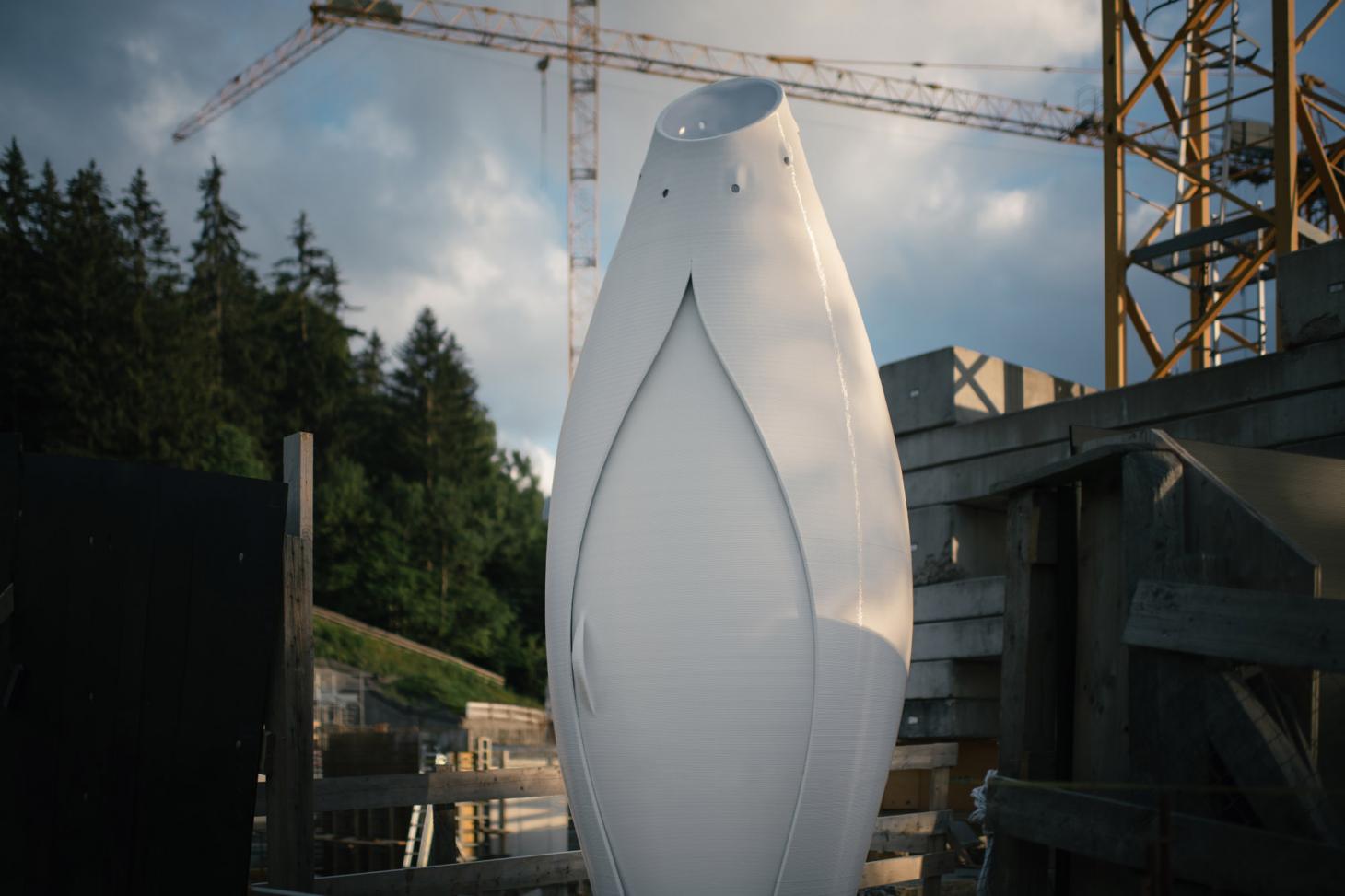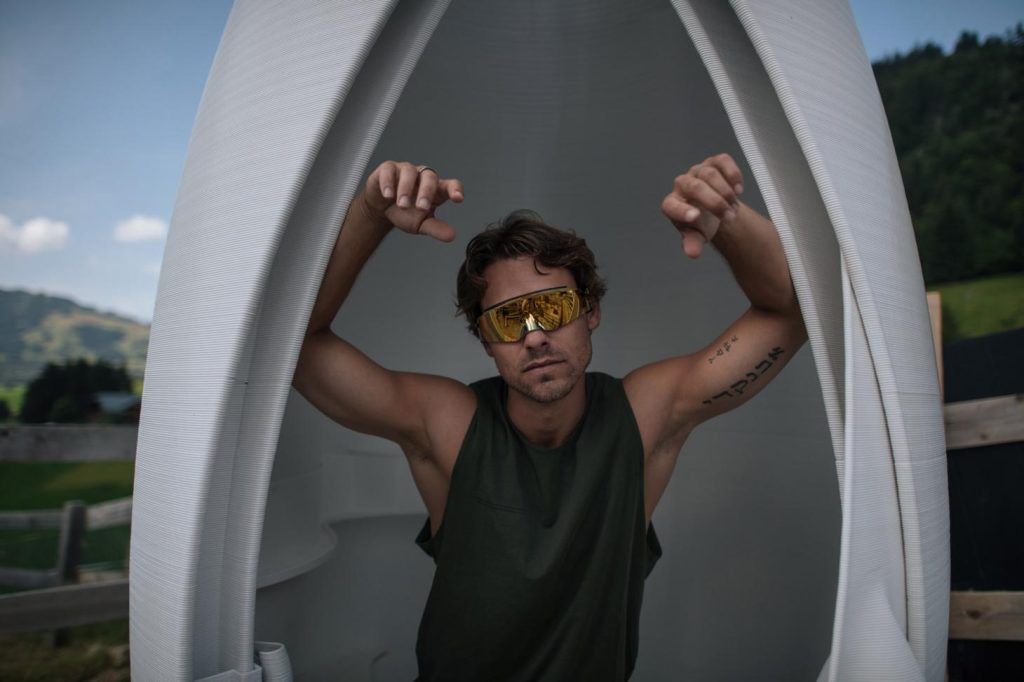China3D printingSocial enterprise To.org has teamed up with Dutch filament developer Reflow to 3D print a unique and luxurious portable in the Swiss Alps out of recycled plastic.toilet.
The portable toilet is made from backflow-upgraded medical waste using an ABB 3D printer and is designed to highlight the lack of sanitation for people living in remote areas. Featuring the body, doors and waste recycling system you’d expect to find on a toilet, the aptly named “Throne” was not only built as a display, but is now open to all to relax and unwind where it was built .
“A public toilet is a public toilet,” explains To.org co-founder and CEO Nachson Mimran. “If our team on the construction site loves this moment as much as I love testing it, they might be in a better mood for the work they do.”

To.org 3D prints Portaloo on site in Switzerland. Image from wallpaper.
Inspiration for upcycling toilets
The To.org Foundation is a group of self-styled social and ecological justice fighters dedicated to funding and developing grassroots initiatives that both support the disadvantaged and protect the planet from global warming. To achieve this, the company regularly invests in start-ups like Beyond Meat, a maker of plant-based meat substitutes, as well as unique infrastructure projects in Africa.
As part of such initiatives, the group is trying to build a “great green wall” in Senegal, planting some 65,000 edible trees in its impoverished Sahar region. In 2019, To.org also built a so-called “bottle brick toilet” in Uganda out of 13,000 recycled bottles, which continues to serve as a blueprint for more toilets in the country, and eventually an inspiration for the throne.
The business’ latest toilet is said to have been conceived when Mimran met Jímenez Garcia, a designer at Spanish studio Nagami, at an event in London, where they came up with the concept of 3D printing an igloo-like creative space for local people to exchange ideas, that would require their own portable toilet.
However, when Mimran arrived at the site where the facilities would be built, he found the toilet facilities to be tedious, so he and Garcia set out to develop a luxurious new gateway that could be deployed in remote areas when nature called.
“We started a new project here last October,” Mimran said. “When I get to a construction site, I need to go to the toilet and walk into one of the portable toilets we see a lot in these places. I don’t like being in this cubicle for a few minutes, coming out wondering if we can do it something different.”

The 3D printed throne has a built-in skylight. Image from wallpaper.
Although To.org’s clamshell social space is still under construction, it has been able to build a large toilet close to the site where they will be built. Installed in just three days using a seven-axis robotic 3D printer, the carsey has an almost rocket-like futuristic look thanks to its pristine white finish, which also lends it a comfortably familiar aesthetic.
Elsewhere, the structure is large enough to accommodate an almond-shaped sliding door, providing a sense of occasion for those on the throne, while its built-in skylight will undoubtedly provide the luxury Mimran is looking for, along with its The integrated wood chips for waste separation are designed to prevent it from being damaged by foul odors.
Enterprise Portaloo, while arguably serving its purpose and attracting attention from locals and designers, is not stackable and therefore not scalable. Additionally, Mimran reportedly admits that the throne is difficult to replicate in Africa, but he still hopes his hillside toilet will raise the profile of 3D printing as a global sanitation solution.
“We believe this technology needs to go through the same process that photovoltaics go through,” concluded Mimran. “Hopefully we can form a coalition to reduce the cost of distributed digital manufacturing, so it’s not only in the hands of privileged creatives and designers, but also in the hands of those who design essential and vital things for survival. “

To.org co-founder and CEO Nachson Mimran is on the throne.
AM Accessible Restrooms
Surprisingly, Throne is not the first toilet of its kind to be developed with accessibility in mind, as 3D printing has been experimented with many times as a means of providing clean sanitation to all. In 2019, Singapore-based architecture studio SPARK launched “Big Ass Toilet”, a lightweight 3D-printed module that can be deployed on-demand via drones.
Similarly, construction company Hamilton Labs has deployed its robotics technology to 3D printed toilets in northern India, along with Singapore’s National Additive Manufacturing Innovation Cluster (NAMIC). Built from recycled fly ash, the toilets are reportedly designed to bring “fast, beautiful and comfortable” cars to people in India’s Madhubani region.
Like To.org, the China National Tourism Administration also uses3D printingtechnology to build a luxurious eco-friendly toilet in the Yangshan “Scenic Spot” in Suzhou. Said to be inspired by nature, the public toilets feature interconnecting ginkgo leaf canopies, allowing them to blend into their surroundings.
China3D printingNet compiled articles!
(responsible editor: admin)


0 Comments for “TO.ORG and REFLOW collaborate to 3D print portable toilets from waste plastic”